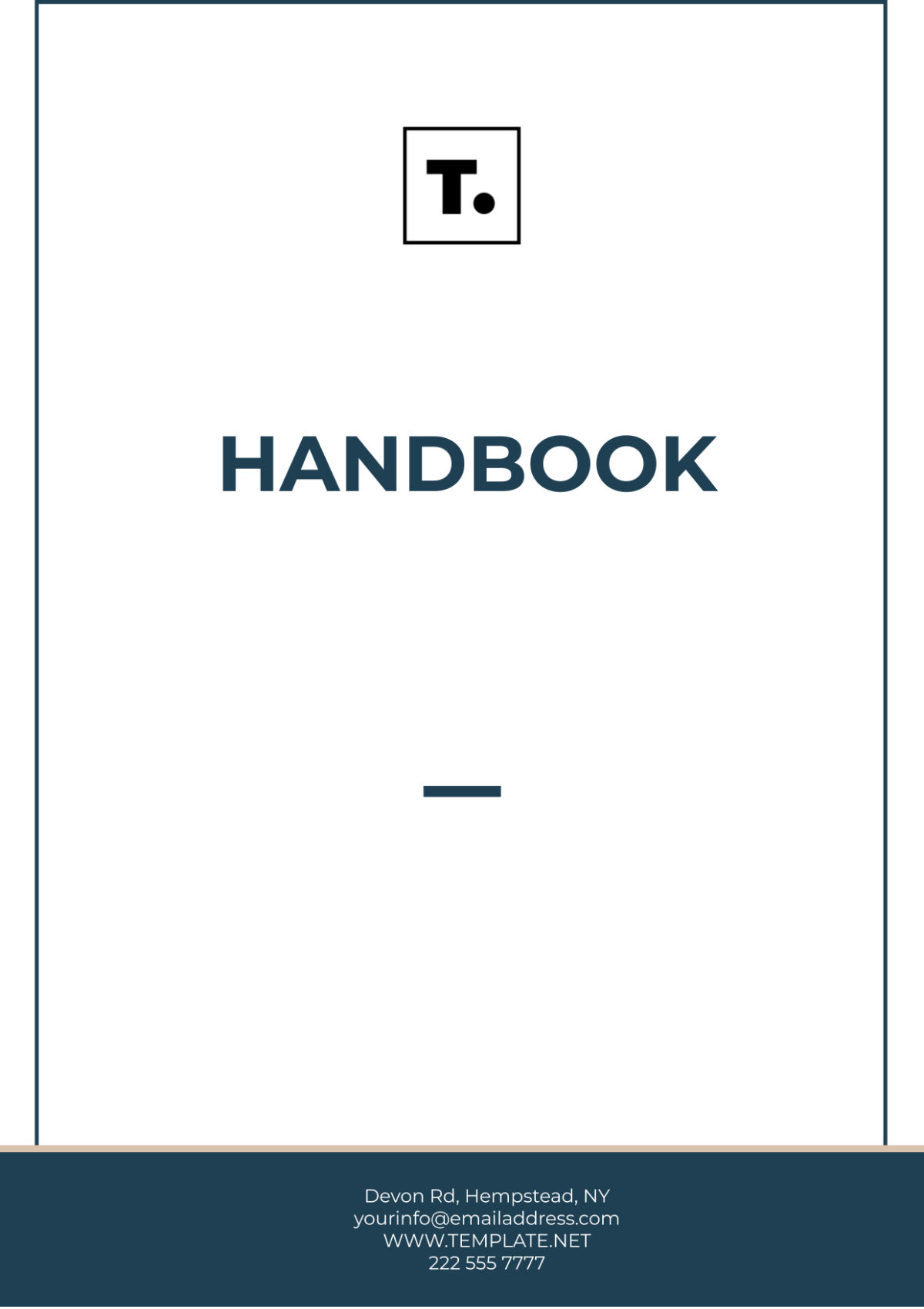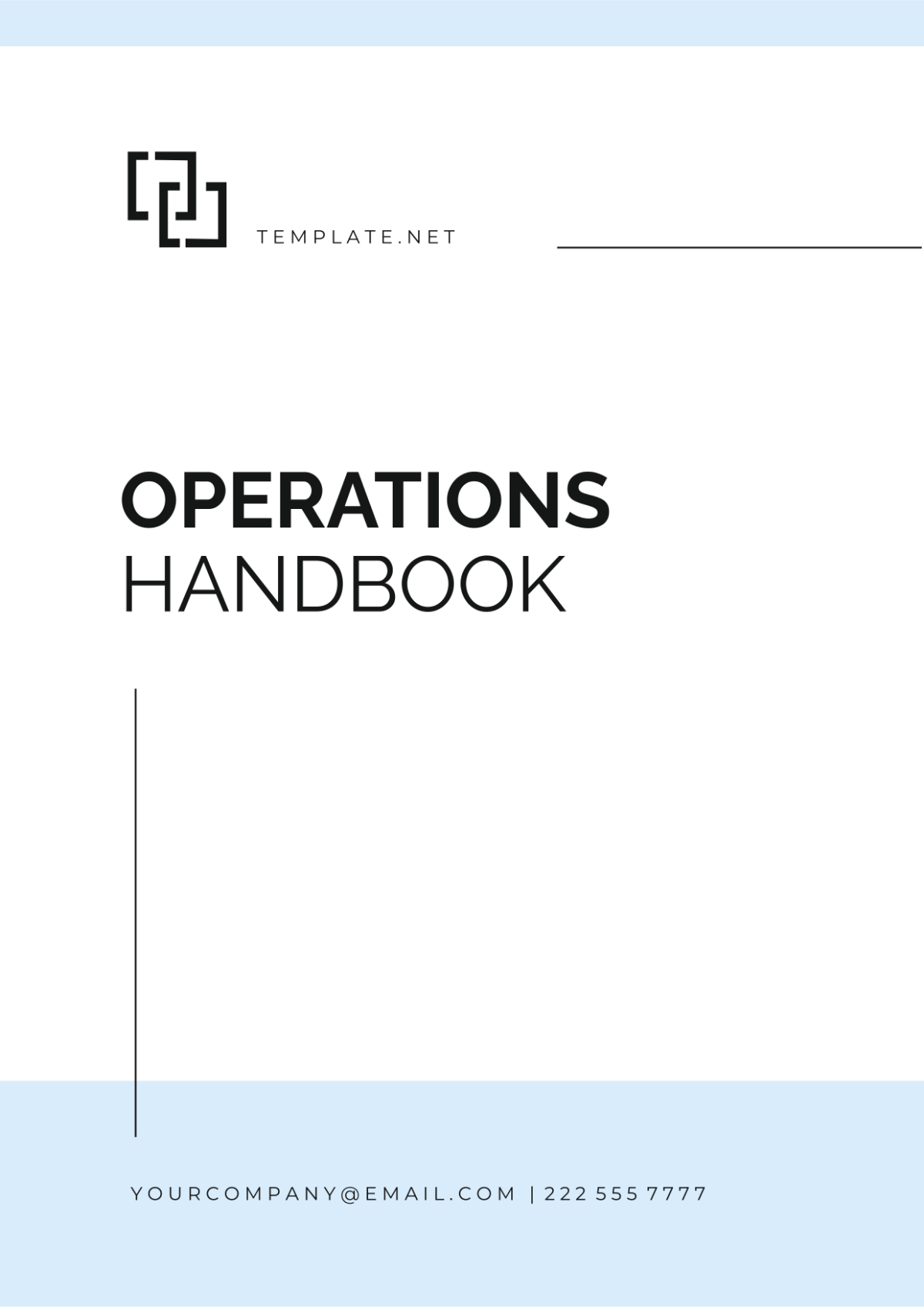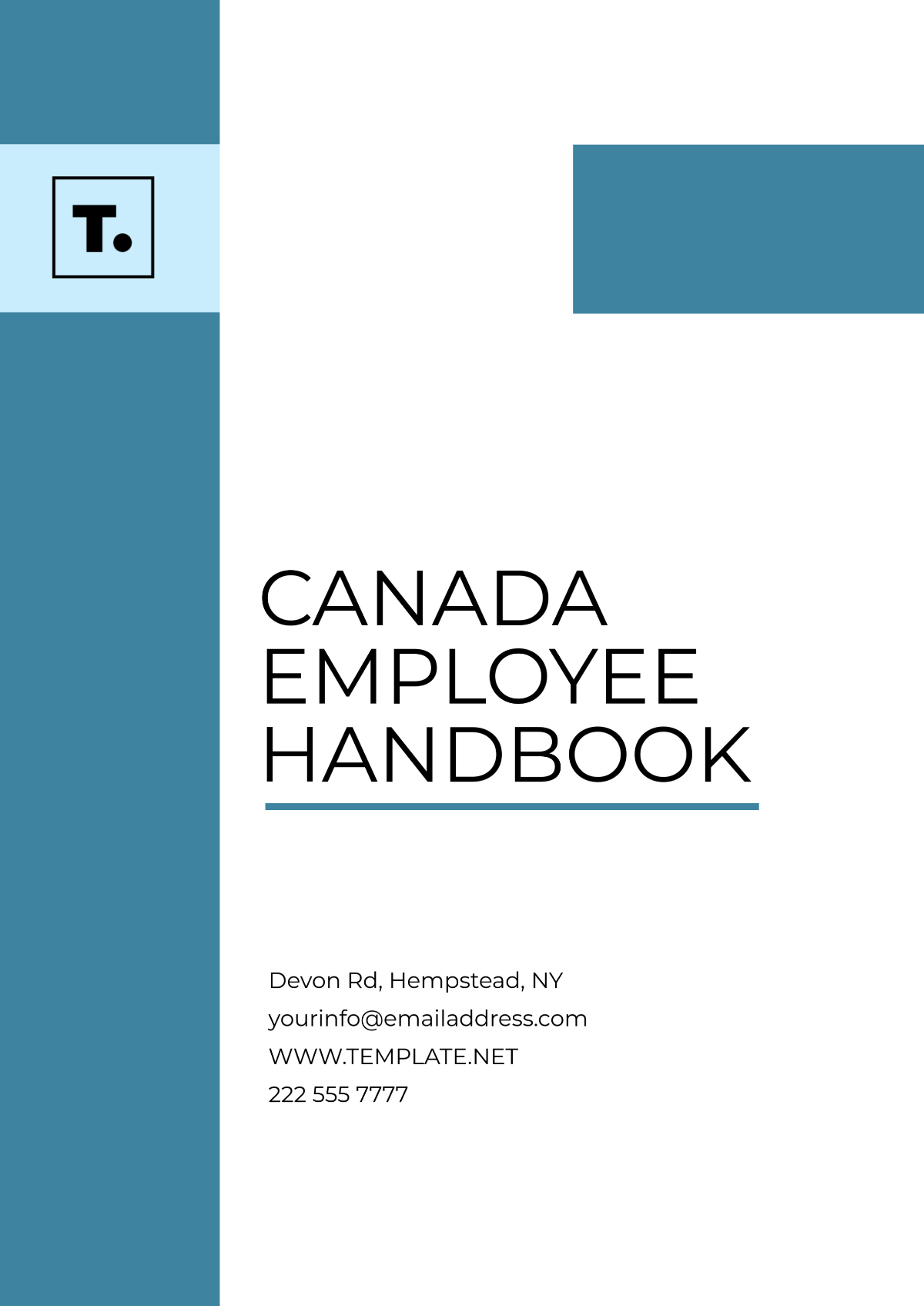Professional Employee Safety Handbook
I. Introduction
A. Purpose of the Handbook
The purpose of this Employee Safety Handbook is to ensure that all employees of [Your Company Name] have access to essential information regarding workplace safety. This handbook aims to outline the safety policies, procedures, and responsibilities crucial for maintaining a safe and healthy working environment. It serves as a foundational document that provides clear instructions on how to prevent accidents, respond to emergencies, and adhere to safety regulations, thereby fostering a proactive approach to safety and health at the workplace.
B. Scope and Applicability
This handbook applies to every employee of [Your Company Name], regardless of employment status, including full-time, part-time, temporary, and contract workers. It addresses all aspects of safety that are relevant to the various job functions within the company. The policies and procedures outlined are designed to be comprehensive, covering general safety practices as well as specific requirements related to different roles and tasks. All employees are required to adhere to these guidelines to ensure a consistently safe working environment.
C. Definitions and Terminology
Understanding key safety terms is crucial for effective communication and compliance. The following definitions will help clarify common terminology used throughout this handbook:
Hazard: Any condition or situation that has the potential to cause harm or adverse health effects.
PPE (Personal Protective Equipment): Gear worn to shield individuals from specific workplace hazards. Examples include gloves, helmets, and goggles.
Incident: An event that results in, or has the potential to result in, injury or property damage. This includes accidents and near-misses.
II. Safety Policy and Objectives
A. Safety Policy Statement
At [Your Company Name], we are committed to maintaining a safe work environment for all employees. Our safety policy emphasizes the following:
Compliance with all applicable safety laws and regulations.
Implementation and maintenance of effective safety programs and practices.
Provision of necessary safety training and resources to employees. This policy reflects our dedication to preventing workplace injuries and fostering a culture where safety is a shared responsibility.
B. Safety Objectives
Our safety program is designed to achieve several key objectives:
Injury Prevention: To minimize the risk of workplace injuries and occupational illnesses through proactive measures and effective safety protocols.
Safety Culture Promotion: To cultivate a workplace environment where safety is prioritized and embedded in daily practices.
Regulatory Compliance: To ensure adherence to all local, state, and federal safety regulations and standards.
Continuous Improvement: To regularly review and enhance safety practices, incorporating feedback and lessons learned from incidents and audits.
C. Responsibilities and Accountability
1. Employer Responsibilities
As the employer, [Your Company Name] is responsible for:
Providing a Safe Work Environment: Ensuring that the workplace is free from recognized hazards and is maintained in a safe condition.
Regulatory Compliance: Adhering to all relevant safety laws and regulations.
Training and Resources: Offering comprehensive safety training programs and providing necessary resources for employees to perform their tasks safely.
2. Employee Responsibilities
Employees play a crucial role in workplace safety. They are responsible for:
Following Safety Procedures: Adhering to all safety guidelines and protocols established by the company.
Reporting Hazards: Promptly reporting any unsafe conditions or potential hazards to their supervisor or safety representative.
Using PPE: Properly utilizing personal protective equipment as required by their job functions and safety guidelines.
III. Safety Training and Education
A. Safety Training Programs
[Your Company Name] provides extensive safety training programs tailored to the needs of our employees. These programs include:
Orientation Training: An introduction to the company's safety policies, emergency procedures, and general workplace safety practices.
Job-Specific Training: Detailed training focused on the specific safety requirements and risks associated with each job role.
Emergency Response Training: Instruction on how to effectively respond to various emergency situations, including fires, medical emergencies, and natural disasters.
B. Training Schedule and Requirements
Training is scheduled and conducted as follows:
Initial Training: Provided during the onboarding process for new hires to ensure they understand and can adhere to safety practices from the outset.
Ongoing Training: Conducted annually or more frequently as needed to address changes in job roles, safety procedures, or regulations.
Refresher Courses: Regular refresher sessions to reinforce safety knowledge and update employees on new safety information or practices.
C. Continuous Learning and Development
We emphasize continuous learning and development in safety:
Workshops and Seminars: Offering periodic workshops and seminars to keep employees informed about the latest safety practices and industry standards.
Online Courses: Providing access to online training modules for flexible learning opportunities and to accommodate remote employees.
IV. Hazard Identification and Risk Assessment
A. Identifying Workplace Hazards
Effective hazard identification is critical for maintaining workplace safety. This involves:
Regular Workplace Inspections: Conducting scheduled inspections to identify potential hazards and assess safety conditions.
Employee Reports: Encouraging employees to report any observed hazards or unsafe conditions.
Incident Analysis: Reviewing past incidents to identify trends and underlying hazards, and using this information to prevent future occurrences.
B. Risk Assessment Procedures
Risk assessments are essential for managing workplace hazards:
Evaluating Risks: Assessing the likelihood and potential impact of identified hazards to determine their risk level.
Implementing Controls: Developing and applying control measures to eliminate or mitigate the risks associated with identified hazards.
Monitoring and Review: Regularly reviewing and monitoring the effectiveness of control measures to ensure they remain effective and relevant.
C. Reporting and Addressing Hazards
Proper reporting and addressing of hazards include:
Reporting Hazards: Employees should promptly report hazards to their supervisor or designated safety personnel.
Corrective Actions: The safety committee or management team will address reported hazards and implement necessary corrective actions to resolve them.
V. Emergency Procedures
A. Fire Safety and Evacuation Plans
1. Fire Safety Procedures
Fire safety procedures are critical for preventing and responding to fire emergencies:
Knowledge of Exits: Employees should be familiar with the location of all exit routes and emergency exits.
Fire Drills: Participation in regular fire drills to practice evacuation procedures and ensure preparedness in case of a real emergency.
Emergency Notifications: Immediate notification of fire emergencies to the appropriate emergency services and following evacuation instructions.
2. Evacuation Plan
The evacuation plan is designed to ensure safe and efficient evacuation:
Assembly Points: Designated areas where employees should gather after evacuating the building to account for all personnel.
Evacuation Routes: Clearly marked routes for safe evacuation, including primary and secondary routes.
B. Medical Emergencies and First Aid
1. Medical Emergency Procedures
In case of a medical emergency:
Contact Emergency Services: Immediately call emergency services for professional medical assistance.
Administer First Aid: Provide first aid if trained and if necessary, until professional help arrives.
2. First Aid Training
First aid training at [Your Company Name] includes:
Courses for Employees: Training programs for select employees to equip them with basic first aid skills.
First Aid Kits: Properly stocked first aid kits available throughout the workplace for use in emergencies.
C. Natural Disasters and Severe Weather
1. Procedures for Natural Disasters
Procedures for natural disasters involve:
Shelter Instructions: Following guidelines for seeking shelter based on the type of disaster (e.g., tornado, earthquake).
Emergency Alerts: Staying informed through weather alerts and emergency notifications from local authorities.
2. Severe Weather Protocols
Severe weather protocols ensure safety during adverse weather conditions:
Emergency Contacts: Maintaining up-to-date contact information for employees in case of severe weather events.
Operational Continuity: Implementing procedures to maintain operations and ensure employee safety during severe weather conditions.
D. Active Shooter and Security Threats
1. Active Shooter Response
The "Run, Hide, Fight" protocol is implemented for active shooter situations:
Run: Evacuate the area if possible and seek safety away from the threat.
Hide: Find a secure location to hide if evacuation is not possible, and remain out of sight.
Fight: Defend yourself as a last resort if confronted by the shooter, using available objects as weapons.
2. Security Threats
For other security threats:
Report Suspicious Activity: Notify security personnel or management of any suspicious behavior or potential threats.
Follow Lockdown Procedures: Adhere to lockdown procedures if an immediate threat is present.
VI. Personal Protective Equipment (PPE)
A. PPE Policy and Requirements
1. PPE Policy
Our PPE policy includes:
Usage Requirements: Guidelines for when and where PPE must be used to protect against specific hazards.
Types of PPE: Description of various PPE types required for different tasks, such as safety glasses, gloves, and respiratory protection.
2. PPE Requirements
Employee responsibilities regarding PPE:
Correct Use: Employees must properly wear and use PPE as required by their job functions.
Maintenance: Ensuring PPE is kept in good condition and replacing it when necessary.
B. Selection and Use of PPE
1. PPE Selection
Selecting appropriate PPE involves:
Risk Assessment: Choosing PPE based on the hazards identified in the risk assessment for each job function.
Fit and Comfort: Ensuring PPE fits well and is comfortable to wear, which is essential for effective protection.
2. Proper Use and Care
Proper use and care of PPE include:
Training: Providing training on the correct use, maintenance, and storage of PPE.
Inspection: Regularly inspecting PPE for damage or wear and replacing it as needed.
VII. Hazardous Materials and Chemical Safety
A. Handling and Storage of Hazardous Materials
1. Safe Handling Procedures
Handling hazardous materials safely involves:
Training: Employees must be trained on proper handling techniques and the use of safety equipment.
Using Safety Data Sheets (SDS): Consulting SDS for information on handling, storage, and emergency measures for specific chemicals.
2. Storage Guidelines
Storage guidelines for hazardous materials include:
Proper Containers: Using appropriate containers for storing hazardous materials to prevent leaks and spills.
Labeling: Ensuring all containers are clearly labeled with contents and hazard information.
B. Chemical Spills and Clean-Up Procedures
1. Spill Response Procedures
Spill response procedures include:
Containing Spills: Using absorbent materials and barriers to contain spills and prevent spread.
Cleanup Procedures: Following established procedures for cleaning up spills and disposing of contaminated materials safely.
2. Reporting Spills
Reporting spills involves:
Notifying Personnel: Informing supervisors or safety officers immediately after a spill occurs.
Documentation: Documenting the spill incident and actions taken to manage and clean up the spill.
VIII. Reporting Incidents and Accidents
A. Incident Reporting Procedures
1. Reporting Requirements
Employees are required to:
Report Immediately: Notify their supervisor or designated safety representative of any incidents without delay.
Complete Incident Reports: Fill out detailed incident report forms, including information about the incident, injuries, and any damage caused.
2. Incident Investigation
Incident investigation procedures include:
Analyzing Causes: Investigating the root causes of incidents to identify contributing factors and prevent recurrence.
Implementing Corrective Actions: Developing and implementing corrective measures based on the findings of the investigation.
B. Accidents and Near-Miss Reporting
1. Accident Reporting
Accident reporting procedures include:
Medical Attention: Seeking immediate medical attention for any injuries sustained in an accident.
Documenting Details: Recording comprehensive details of the accident, including the date, time, location, and witness statements.
2. Near-Miss Reporting
Near-miss reporting involves:
Reporting Near-Misses: Informing supervisors of near-miss incidents to help prevent potential accidents.
Analyzing Near-Misses: Reviewing near-miss reports to identify and address potential hazards before they lead to actual incidents.
IX. Compliance and Enforcement
A. Compliance with Safety Regulations
1. Legal and Regulatory Compliance
[Your Company Name] ensures compliance with:
OSHA Regulations: Adhering to Occupational Safety and Health Administration (OSHA) standards and guidelines.
Industry-Specific Regulations: Following regulations specific to our industry to ensure safe work practices.
2. Internal Compliance Audits
Internal compliance audits involve:
Conducting Reviews: Performing regular reviews of safety practices and procedures to ensure they meet regulatory requirements.
Corrective Actions: Implementing corrective actions to address any issues identified during audits.
B. Enforcement of Safety Policies
1. Disciplinary Actions
Disciplinary actions for non-compliance may include:
Verbal Warnings: Issuing initial verbal warnings for minor infractions or non-compliance issues.
Written Warnings: Providing written warnings for repeated or more serious violations of safety policies.
Termination: Considering termination for severe or repeated violations that pose significant risks to safety.
2. Safety Incentives
Safety incentives are used to:
Recognize Adherence: Acknowledge and reward employees who consistently follow safety procedures and contribute to a safe work environment.
Award Programs: Implement award programs that provide bonuses or other incentives for achieving safety milestones and demonstrating exemplary safety practices.
X. Review and Revision of the Handbook
A. Regular Review of Policies
1. Annual Review
The Employee Safety Handbook is reviewed annually to:
Update Policies: Make necessary updates to policies and procedures based on changes in regulations, industry standards, or company practices.
Maintain Relevance: Ensure the handbook remains relevant and effective in addressing current safety issues and practices.
2. Employee Feedback
Employee feedback is gathered through:
Surveys and Suggestion Boxes: Collecting feedback through surveys and suggestion boxes to understand employees' perspectives on safety practices.
Safety Meetings: Discussing feedback and suggestions during regular safety meetings to identify areas for improvement.
B. Updating the Handbook
1. Revision Procedures
Revising the handbook involves:
Documenting Changes: Keeping detailed records of all changes made to the handbook to track revisions and updates.
Communicating Updates: Informing all employees of updates and revisions to ensure they are aware of the latest safety policies and procedures.
2. Distribution of Updated Handbook
Updated handbooks are distributed through:
Electronic Copies: Sending electronic copies of the updated handbook to employees via email or through an intranet portal.
Printed Copies: Providing printed copies to employees as needed to ensure they have access to the most current information.

















































